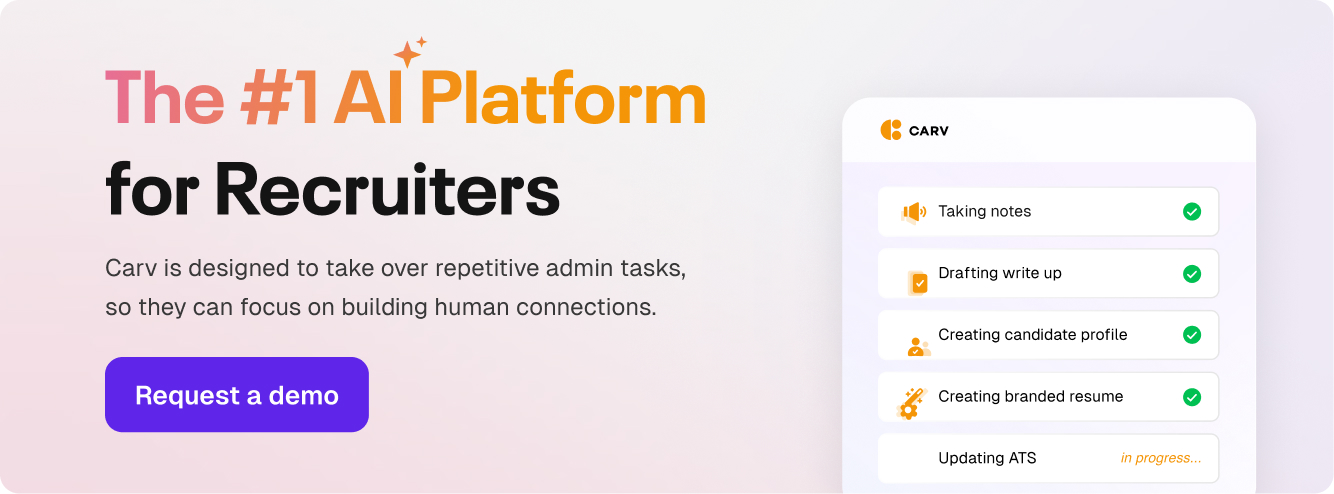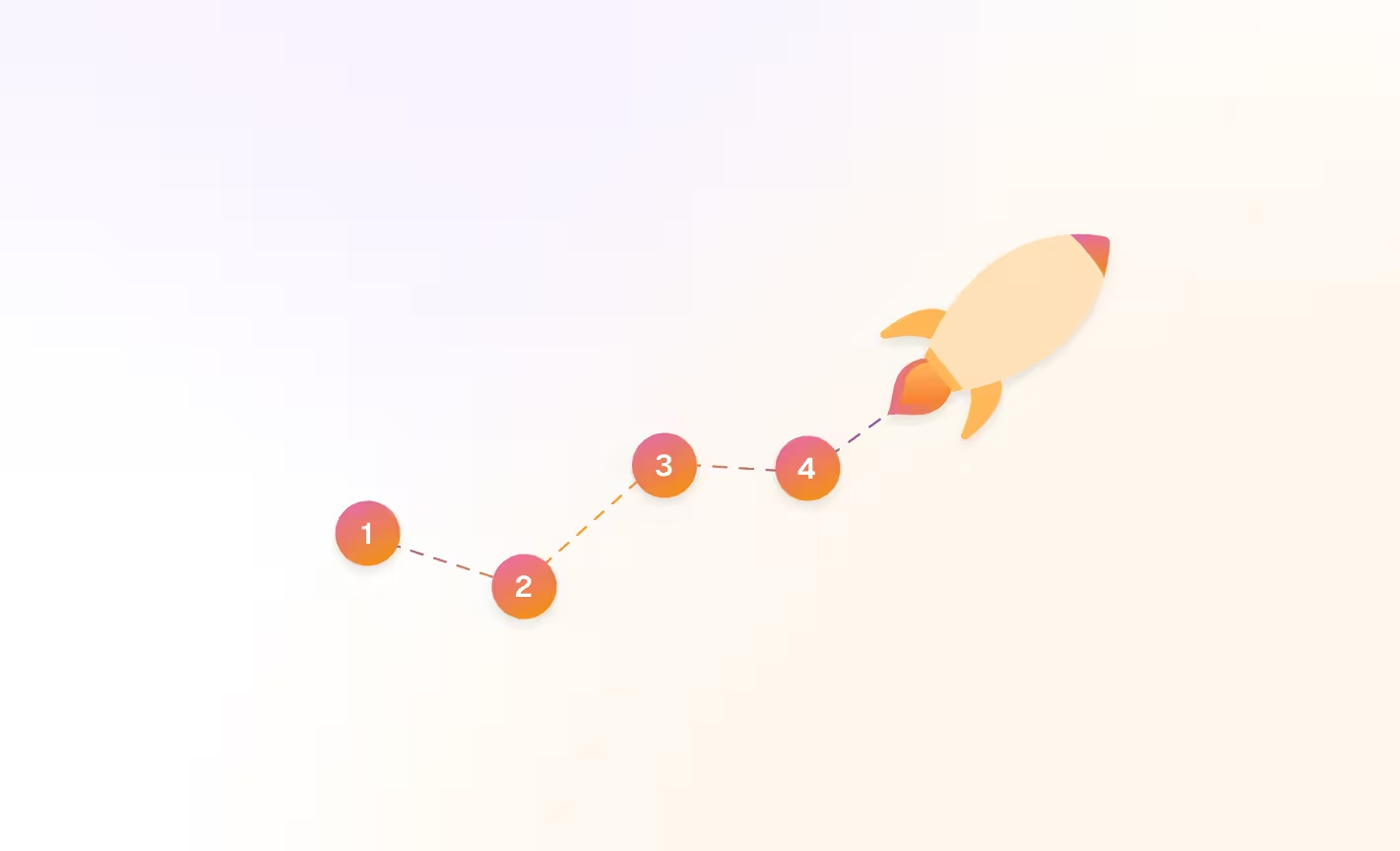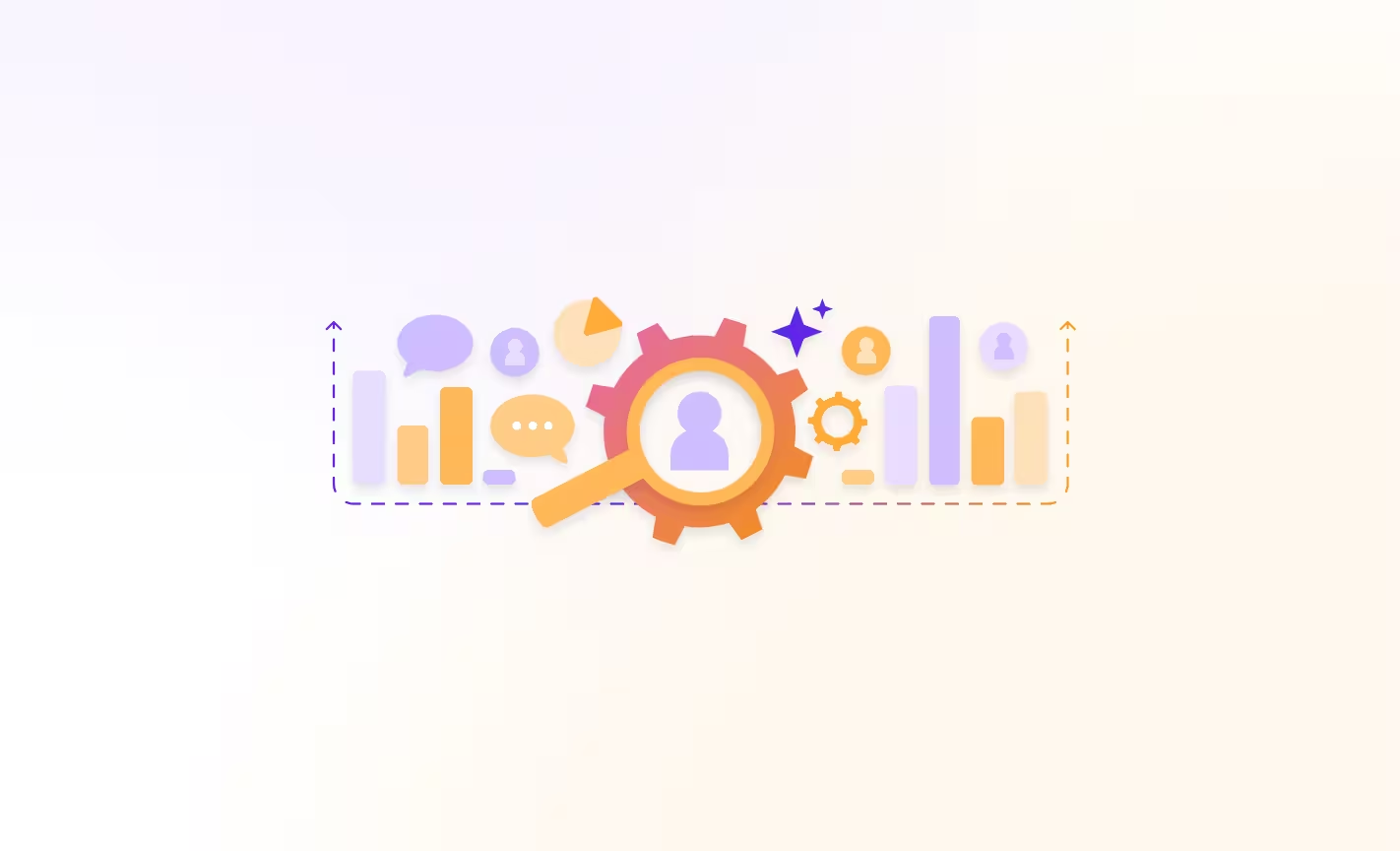Most recruiting teams approach AI adoption backwards. They start with the technology and then try to figure out how it fits into their workflows. But the most successful shifts happen by mapping the pains, not the tools.
When you ignore the hype, focus on the real friction in your process, and start where it hurts most, you’re much more likely to successfully transition to AI-powered recruiting.
Remember, the goal here is to use AI strategically to eliminate the busywork so your team can focus on what they do best: building relationships, advising hiring managers, and closing great hires faster. And in order to do that correctly, you first need to understand what that “busywork” actually is.
Here are 8 practical steps to help your team make the shift effectively and see real results from day one.
1. Map your recruitment pain points
Before you look at platforms, understand what’s actually broken.
Where does your team spend most of their time – manual screening, interview scheduling, or endless data entry?
Map your workflow from intake to offer and flag every manual step. Then decide what success looks like:
- Faster time-to-fill?
- Better candidate quality?
- Stronger candidate experience?
The clearer your priorities, the easier it becomes to choose tools that solve real problems instead of adding noise.
2. Decide whether to build or buy
Building your own AI stack can sound appealing. But for most staffing firms, it’s a trap.
Developing custom AI takes time, data science expertise, and ongoing maintenance. Buying a proven platform lets you move fast, stay compliant, and skip months of trial and error.
Platforms like Carv are already designed for enterprise staffing workflows:
- Native ATS integrations so your data stays clean and connected.
- GDPR, ISO, and SOC-2 compliance built in from day one.
- Recruiter-first design, refined by thousands of hours of live feedback.
3. Choose between point solutions or full AI recruitment platforms
Point solutions can be great if you have one clear pain point, like interview scheduling or resume screening. They're usually faster to implement and less disruptive to your current process, because they can be adopted effortlessly into your existing workflows.
However, point solutions are much more limited than all-in-one platforms. You may have some integration challenges, and if you need to tackle another issue down the line, you’ll likely need a separate tool to do so.
Full, comprehensive platforms typically have the features you need to tackle the entire candidate matching and hiring process. They offer better data consistency and integrated workflows than point solutions.
Ultimately, the key is to avoid sprawl. No matter your choice, make sure everything integrates well with your existing ATS and doesn't create more headaches for your team.
4. Delegate one or two key tasks first
Resist the urge to overhaul everything at once. Pick one or two high-impact, low-risk areas to start with.
Whatever task you choose to automate by delegating to AI, remember to go slow. Run a pilot with a small team or specific job types first. This lets you work out any kinks, gather feedback, and build internal confidence before rolling out more broadly.
Administrative tasks such as ATS data entry or interview note taking are often a good starting point. They can free up a significant amount of time for your recruiters by streamlining routine tasks and are unlikely to derail your hiring process if the automation doesn’t work right out of the gate.
Use the pilot results to refine your approach and demonstrate ROI to stakeholders. Nothing builds buy-in like showing time savings and improved candidate experience. And once you’re confident that your first step into AI adoption has been a positive one, you can start testing other features, too.
With Carv, for example, many teams begin by automating interview admin and ATS updates before expanding further into pre-screening and candidate engagement.

5. Train your recruiters to work with AI, not against it
Ultimately, the biggest implementation challenge isn't technical – it's human. AI adoption is a real struggle for many TA leads, and it can sink an implementation project very fast.
Thus, as part of change management, it’s essential to reinforce that AI’s purpose is to remove time-consuming administrative work, not to replace human judgment.
Assessing cultural fit, building candidate relationships, and making nuanced hiring decisions will always come down to recruiters and hiring managers.
Provide hands-on training, not just overview presentations. Let your team actually use the tools, ask questions, and see how AI fits into their daily workflow. Confidence builds from experience, not instructions.
6. Monitor and measure impact continuously
You never want to assume that AI is working, even if it’s plugging along in the background. You need to back it up with data to ensure that it’s indeed helping and not hurting your team.
You’ll want to compare your team’s performance before and after AI implementation to get concrete answers. You can see how AI is helping you to identify and hire top talent by tracking the following metrics:
- Time-to-hire.
- Candidate response rates.
- Recruiter satisfaction score.
- Quality of hire data.
Remember that you also want to go beyond tracking efficiency. Pay attention to candidate experience, too. Assess how job seekers are responding to AI-powered outreach, how fast they’re moving through the funnel, and what feedback they give.
More efficient recruitment processes don’t matter if your team is relying too much on a faulty AI model that’s overlooking top candidates or making it difficult for applicants to ask questions from an actual human.
7. Build in ethics and transparency from day one
AI in recruitment comes with certain risks around bias, privacy, and transparency that you need to address.
The first step is to understand how AI makes decisions. Human oversight is essential to track overall quality and potential issues like unconscious bias.
If your AI learns that “top candidates” all went to the same schools or worked at the same companies, it could start filtering out great people from different backgrounds.
That’s not smart hiring; it’s algorithmic bias, and it could unintentionally screen out candidates from non-traditional backgrounds or underrepresented groups.
The key is to maintain human oversight at critical decision points. AI can help identify top candidates, but humans should make final hiring decisions – especially for sensitive roles or legal compliance reasons.
Carv’s AI systems are explainable and traceable – every action can be audited, in line with ISO 42001 and EU AI Act standards.
8. Plan for ongoing AI evolution and process improvement
AI technology moves fast, and your recruitment needs will evolve too.
Build flexibility into your AI strategy. Choose vendors who are actively adding new capabilities. When possible, avoid getting locked into rigid contracts that prevent you from adapting as better solutions emerge.
Regularly reassess your AI-driven workflows as your team grows and your hiring needs change. What works for 10 recruiters might not scale to 50. Be ready to adjust as new advancements become available, and build a culture that’s open to continuous learning and technology adoption.
Take the first step towards AI transformation
When margins are tight, investing in AI can feel like a luxury. But the reality is sharper: the cost of standing still is higher.
Competitors are already adopting automation and intelligence at scale. Clients are starting to expect faster turnaround times and more personalized candidate experiences.
The most successful AI transitions – especially ones that look to reorient entire processes – start small, with a single tool, pilot, and task. After you’ve tested this, you can scale based on real results (and not just hype).
AI transformation is never completely frictionless. Any time you rewire how work gets done, you’re going to face resistance, uncertainty, and practical roadblocks. The key is to expect them, plan for them, and move through them strategically.
If you’re not sure how to start, and want to see what a recruiter-first AI platform looks like before committing to any change, you can book a demo with Carv and start your transition the right way.



%20(1).avif)



